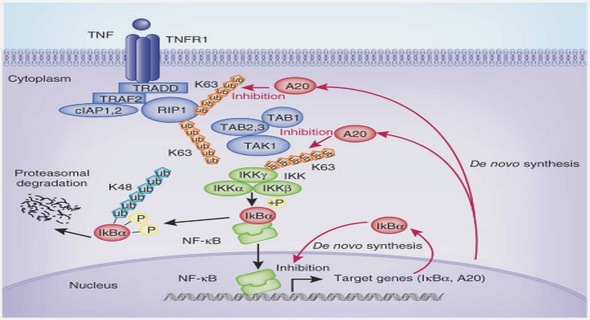Get Complete Project Material File(s) Now! »
Methodology
This chapter presents research methodology and methods used to achieve the purpose of the thesis. Initially, a brief introduction will be given regarding the work process, as well as the linkage between research questions and methods. This is followed by research approach, research design, research strategy, collection and data analysis. The chapter ends with a discussion regarding research quality.
Research process
The research process, in which this thesis has followed can be divided into seven steps, see in Figure 5. The research process was initiated by a company visit where “surprising facts” from observations concerning performance indicators in public procurement were identified. Following this, a brief literature review within public procurement was conducted where a gap was identified. Thus, justifying what was observed during the company visit actually was of interest. Based on the company visit and the brief literature review, a problem formulation and research questions were formulated. In order to answer the research questions and fulfill the purpose, a research strategy was chosen by the author.
For this thesis, a case study was considered to be an appropriate research strategy for the empirical study, providing a more in-depth understanding of a phenomenon. Correspondingly to the case study, a research literature review was conducted in order to gain knowledge and to explore the phenomenon that has previously been observed. The data collection techniques used in the empirical study includes semi-structured interviews, observations and documentary. When relevant data had been obtained from both the empirical study and the research literature review, two separate data compilation were conducted. Based on the data analysis, the research questions were abled to be answered. Thus, fulfilling the purpose of the thesis.
Research approach
Conducting research will involve the use of theory, whether it is used in the design of the research may not be clear, however, during the presentation of the findings and conclusion it tends to be more obvious (Saunders, Lewis and Thornhill, 2012). The extent to which the author is well aware of theory in a research can be exposed based upon the reasoning in which the study adopts. According to Saunders et al., (2012), there are three research approaches: inductive, deductive and abductive.
The research approach, which underpins this thesis, is primarily an abductive approach which is a combination of an inductive and deductive approach. The process of which this thesis have been exercising an abductive research approach is in line with Saunders et al., (2012) and Patel and Davidson, 2011), and can be described in three major steps; (1) ideas were formulated where “surprising facts” was discovered through observations (inductive), (2) based on that, a theoretical framework was developed through a extensive research literature review (deductive), correspondingly as a case study was conducted (inductive) and (3) the final conclusions were developed combining the result of both approaches (abductive). Hence, it cannot be stated that this thesis is entirely inductive. An illustration justifying the selected research approach can be seen in Figure 6.
Research design
The research design refers to the general plan how researchers intend answering their research questions in order to fulfill their purpose (Saunders et al., 2012). This includes selecting the methodological choice of a research design, as well as deciding the nature of the research design (Saunders et al., 2012). The methodological choice of a research, includes selecting a quantitative, qualitative or multiple methods research design (Saunders et al., 2012). Whereas the nature of a research design concerns the way in which you intend to ask your research questions, which either is of exploratory, descriptive or explanatory character (Saunders et al., 2012).
As this thesis has applied more than one qualitative data collection technique with associated data analysis procedures, the methodological choice of this thesis is what Saunders et al., (2012) refers to as a multimethod qualitative study. Furthermore, this methodological choice is according to Saunders et al., (2012) preferable since it allows researchers to conduct a more comprehensive data collection, analysis and interpretation. Lastly, due to the fact that that the collection of data are derived from interviews, observations and a research literature review, and the findings and result will not be presented in numbers, this thesis is according to Wilson, (2010) and Saunders et al., (2012) characterized as a qualitative.
The nature of this thesis can, according to Saunders et al., (2012) and Yin, (2014), be seen as exploratory since the purpose of this thesis is to explore, which allows the author to gain insight about the research topic and discover what is happening. In addition, by conducting an exploratory research, the possibility of being flexible and adaptable to change enables the author to answer the research questions, thus fulfilling the purpose of this thesis.
Research strategy
A research strategy emphasizes on the overall plan on how you intend to encounter your research questions, e.g. where to retrieve data, how to collect and analysis data, as well as ethical issues and constraints that might arise performing a research (Saunders et al., 2012). Furthermore, the choice of research strategy is essential achieving coherence throughout the entire research (Saunders et al., 2012). Therefore, this section presents the research strategies of this thesis. Initially, a systematic literature review is presented which is followed by the case study.
Research literature review
For this thesis, a research literature review has been conducted in order to describe existing knowledge, justify the need for new research, explain research findings and quality of available research, all of which are in line with Fink, (2010). Du to the fact that the body of public procurement is well covered in literature, this strategy will enable possible answers to the research questions in this thesis, thus fulfilling the purpose and contributing to already existing literature. In addition, the definition provided by Fink, (2010) aligns with the author´s perception and aim for a research literature review. Thus, the definition of a research literature review is:
“ A systematic, explicit, and reproducible method for identifying, evaluating and synthesizing the existing body of completed and recorded work produced by researches, scholars, and practitioners.”
There are several ways of conducting a research literature review, which derive from authors such as Esterby-Smith, Thorpe and Jackson, (2015), Savin-Baden & Major, (2013) or Fink, (2010). However, this thesis undertakes the seven steps by Fink, (2010). These steps can be briefly described as followed: (1) selecting a research questions, (2) selecting bibliographic or article database, (3) choosing search terms, (4) Applying practical screening criteria, (5) applying methodological screening criteria, (6) doing the review and (7) synthesizing the results. How these steps have been applied to this thesis will be more in detail described and illustrated in chapter 3.5.1.
The conducted research literature review contributed to several areas within this thesis. Initially, the research literature review contributed to justify the research gap acquired through observations (e.g. the purpose of the thesis) resulting in refining the research questions, which is line with Flink, (2010). Secondly, the research literature review provided a more in-depth knowledge within the topic of this thesis. Lastly, the research literature review was a research strategy within this thesis in order to obtain acceptable knowledge within the body of public procurement, which was used to answer the research questions, thus fulfilling the purpose of this thesis.
Case study
In this thesis, a case study has been conducted in order to collect empirical data. The reasons for choosing a case study as a strategy for this thesis have been many. First, conducting a case study enables answers for research questions built on what and how (Saunders et al., 2012). As this thesis is built on such research questions, Saunders et al., (2102) and Yin, (2014) states a case study is considered be the most appropriate strategy. Since this thesis of exploratory character, conducting a case study allowed the author to explore the research topic (public procurement) and the phenomenon (performance indicators) in real-life context, which is in line with Saunders et al., (2012) and Merriam, (2009). In addition, a case study allowed the author to gain richer understanding of a particular phenomenon (performance indicators in public procurement), which is strengthened by Saunders et al., (2012) and Merriam, (2009) who both argue that for such purposes, a case study is considered the appropriate choice. Saunders et al., (2012) also states that conducting a case study allows researchers to be flexible since the initial boundary set might not be the appropriate one. Therefore, a case study allowed the author to be flexible depending on what information was retrieved and based on that provide high-quality answers to research questions, thus fulfilling the purpose of the research.
In order to gain more in-depth data about a particular phenomenon, rather than a wider range of data, exercising multiple cases, a single case study was selected. The case company, situated in Stockholm, Sweden, was chosen due to the author´s interest of the industry, and the fact the company specializes in public procurement, procuring goods and services for inter alia Swedish Armed Forces (FM).
Data collection
This section presents the procedure in which data were collected for this thesis. Initially, the linked of how the data collection methods have been applied to answer the research questions are illustrated. This is followed by a more in-depth description on how data were collected with support from a research literature review. Finally, this section ends with a case study description on how data were collected through interviews, observations and documentation.
he linked in which data collection methods have been applied to answer the research questions can be illustrated in Figure 7 below.
1 INTRODUCTION
1.1 BACKGROUND
1.2 PROBLEM FORMULATION
1.3 PURPOSE
2 FRAME OF REFERENCE
2.1 PUBLIC PROCUREMENT
2.2 PERFORMANCE MANAGEMENT
3 METHODOLOGY
3.1 RESEARCH PROCESS
3.2 RESEARCH APPROACH
3.3 RESEARCH DESIGN
3.4 RESEARCH STRATEGY
3.5 DATA COLLECTION
3.6 DATA ANALYSIS
3.7 RESEARCH QUALITY
4 RESEARCH LITERATURE REVIEW
4.1 DESCRIPTIVE ANALYSIS
4.2 CONTENT ANALYSIS
5 EMPIRICAL DATA
5.1 CASE COMPANY
5.2 EMPIRICAL FINDINGS
6 RESULT AND ANALYSIS
6.1 WHAT PERFORMANCE INDICATORS CAN BE IDENTIFIED WITHIN PUBLIC PROCUREMENT?
6.2 HOW CAN PERFORMANCE INDICATORS WITHIN PUBLIC PROCUREMENT BE CATEGORIZED?
7 DISCUSSION
7.1 RESULT DISCUSSION
7.3 LIMITATIONS
8 FINAL CONCLUSION
8.2 THEORETICAL AND PRACTICAL CONTRIBUTIONS
8.3 FUTURE RESEARCH
REFERENCES.
BIBLIOGRAPHIC


